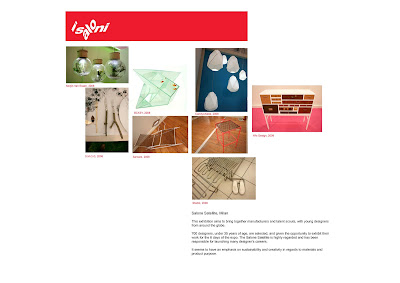
Sunday, November 15, 2009
Monday, November 2, 2009
Monday, October 19, 2009
Monday, October 12, 2009
Monday, October 5, 2009
Sunday, September 27, 2009
Monday, September 14, 2009
esquisse four

The base is two triangles that are locked together creating a strong seat. This allows structural element to be positioned evenly across the base that are able to support a large amount of weight.

The back is joined to one of the triangles and folded accordingly to create a supportive back, seat and locking system.



Monday, September 7, 2009
esquisse three: locking systems
esquisse three: locking systems
esquisse two: understanding form
I originally tried to construct the pyramid by positioning the base in the centre and the four triangles placed around this central square. I realized that it was extremely difficult to get four clean joins using this method, and the overall outcome was poor.
On my second attempt I changed the method, as seen below. This gave me a much neater outcome, as well as a much stronger structure.




Subscribe to:
Posts (Atom)











































